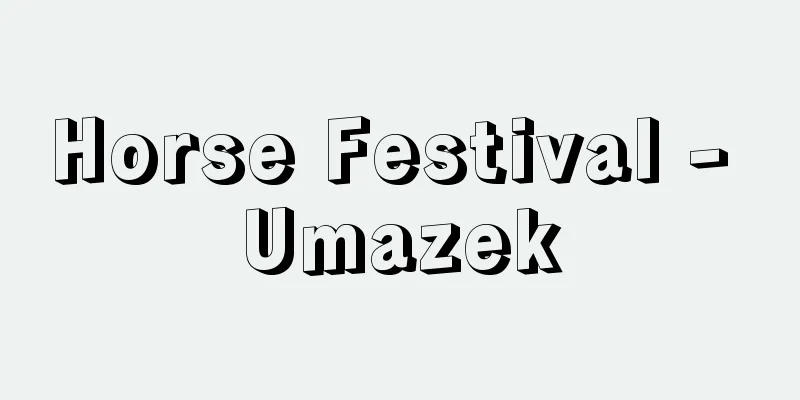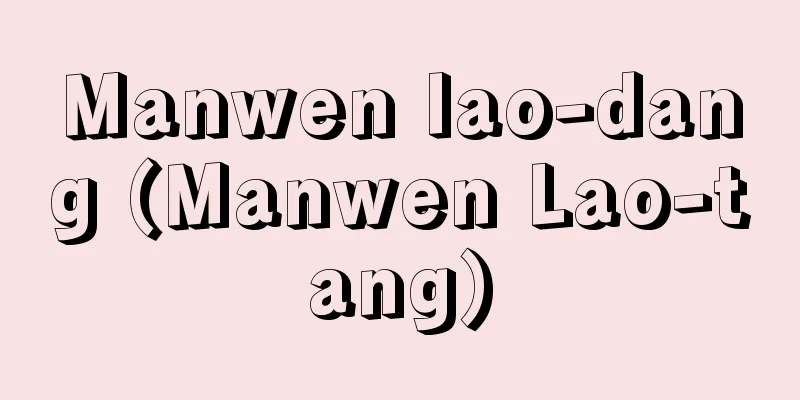Hieki Station

|
Also called "Hyaku." Under the Ritsuryo system, it was the practice of sending messengers to communicate in emergencies between the central government and various provinces and military offices. The official edicts (Kushikiryo) stipulated the format for issuing imperial edicts from the central government to overseas offices (Hiyakushitashiki), and the format for overseas offices to report to the central government (Hiyakujoshiki). It stipulated that Hiyaku be issued when a person who had fallen into exile in the outskirts returned or when a person who had been banished applied for naturalization (Koryo: Article on Fallen Outskirts), and also stipulated that great auspicious events, military events, disasters, epidemics, and news from outside the borders of each province be reported in a hasty manner (Official Edicts: Article on National Auspicious Events). Regarding the difference between tobi-eki and haseki-eki, the Myobo-ka in the "Ryo no Shuge" (Diary Collection), explain the difference by noting that tobi-eki was a messenger sent by post and haseki-eki was a special envoy (Article on the Fall of the Household Law and Article on the Official Order of Hiseki-shiki), but in reality there seems to have been no distinction between the two. The journey of an envoy was set at more than 10 stations per day (Article on the Official Order of Ekiden-ma), and in 740 (Tenpyo 12), it is seen that it took four days to travel from Dazaifu to Heijo-kyo (Shoku Nihongi). The "Rites" (Diary of the Imperial Court) set out the procedure for the creation of imperial talismans and the ceremony for dispatching an envoy, and even in the Heian period, there are cases where communication was made by tobi-eki when envoys returned from Tang China, when envoys from Bohai arrived, or when local rebellions broke out. [Tomoyasu Kato] "Ancient Stations and Roads" by Sakamoto Taro (included in "Sakamoto Taro Collected Works 8," 1989, Yoshikawa Kobunkan)" ▽ "A Study of the Japanese Ritsuryo State" by Aoki Kazuo (1992, Iwanami Shoten)" ▽ "Ancient Transportation" by Tanaami Hiroshi, new edition (1995, Yoshikawa Kobunkan)" ▽ "A Study of the Ancient Ekiden Horse System" by Nagata Hideaki (2004, Yoshikawa Kobunkan)" ▽ "On the Transmission of Information Under the Ritsuryo System - Focusing on Flying Stations" by Mori Tetsuya (included in "Japanese History 571")" ▽ "On the Official Flying Station System and Imperial Talisman System" by Yanagi Yutaro (included in "Japanese History 283") Source: Shogakukan Encyclopedia Nipponica About Encyclopedia Nipponica Information | Legend |
|
「ひやく」とも。律令制下において、中央と諸国・軍所との間で緊急事態の連絡のために駅使を派遣すること。公式令(くしきりょう)には、中央から在外諸司に勅を下達する書式である飛駅下式と、逆に在外諸司から中央へ上奏する書式である飛駅上式が定められている。外蕃(げばん)に没落していた人が還(かえ)ってきたときや、化外(けがい)の人が帰化を願い出たときに飛駅を発すると規定する(戸令(こりょう)没落外蕃条)ほか、諸国の大瑞(だいずい)・軍機・災異・疾疫・境外消息については馳駅(ちえき)して報告すると定められている(公式令国有瑞条)。飛駅と馳駅について、『令集解(りょうのしゅうげ)』の明法家(みょうぼうか)の諸説では、飛駅は逓送による使者、馳駅は専使によると注釈して違いを説く(戸令没落外蕃条・公式令飛駅式条)が、実態においては両者に区別はなかったと見られる。使者の行程は1日に10駅以上とされ(公式令給駅伝馬条)、740年(天平12)の事例でも大宰府(だざいふ)から平城京間を足かけ4日で連絡したことがみえている(『続日本紀(しょくにほんぎ)』)。『儀式』飛駅儀に勅符(ちょくふ)作成と使者発遣の儀式次第が定められており、平安時代にも、遣唐使の帰還や渤海使(ぼっかいし)来着、地方の反乱勃発などに際して飛駅による連絡が行われた事例が見られる。 [加藤友康] 『坂本太郎著『古代の駅と道』(『坂本太郎著作集8』所収・1989・吉川弘文館)』▽『青木和夫著『日本律令国家論攷』(1992・岩波書店)』▽『田名網宏著『古代の交通』新装版(1995・吉川弘文館)』▽『永田英明著『古代駅伝馬制度の研究』(2004・吉川弘文館)』▽『森哲也著「律令制下の情報伝達について―飛駅を中心に」(『日本歴史571』所収)』▽『柳雄太郎著「公式令飛駅式と勅符式について」(『日本歴史283』所収)』 出典 小学館 日本大百科全書(ニッポニカ)日本大百科全書(ニッポニカ)について 情報 | 凡例 |
>>: Hiegaeri - Hiegaeri (English spelling) ditch polypogon
Recommend
Dichotomous sympodium
…When one branch of a bifurcation becomes stronge...
Magnetic aftereffect - Jikiyokou (English spelling) magnetic aftereffect
A phenomenon in which a time delay occurs in the c...
Gallery Grave
...It is not customary to call a dolmen a tomb wi...
Asuke Jiro - Asuke Jiro
...A samurai from the end of the Kamakura period....
Suruga Dance
One of the Gagaku Azuma Asobi . This dance is perf...
Reading and Reading Diary - Dokushobinkyuuki (English)
A bibliographical work written by Qian Zeng (1629-...
mall
...As an architectural term, it can also refer to...
Turning Point
A novel by Keiko Kobayashi. In 1978, it won an hon...
Hard giraffe - Hard giraffe
…In Japan, it is found along the Pacific coast fr...
Taichung - Taichung
A city in the mid-west of Taiwan. Located in the ...
Minase [village] - Minase
A village in Ogachi County, in the southeastern ti...
Sword - Tachi
A style of Japanese sword. When worn, it is hung ...
van Agt, AAM (English spelling)
...Through the multi-party system and the affluen...
Liberation - Kaihou
[1] [noun] ① To free oneself from the constraints ...
Ichijo (metalwork)
…There were also 14 branches and sects of Goto, k...









